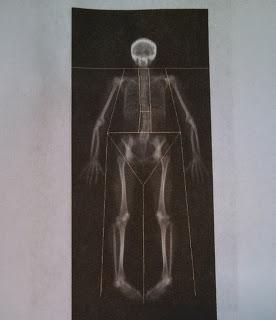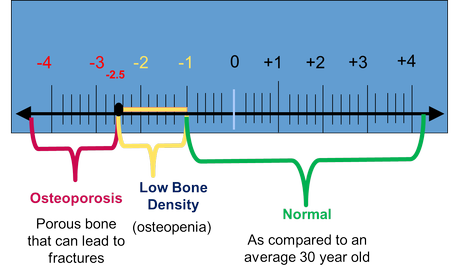
Karen's Whole Body DXA Bone Scan 9/28/13
I recently participated in a research study where I received a 5 different scans of my fat, muscles and/or bones via a DXA scan.As a participant, I signed forms that emphasized that this scan was for research purposes and not for diagnostic purposes.
The print out of my scans also notes: "Image not for diagnostic use."
Nevertheless, I decided to take my results as an opportunity to learn more about bone health.
If you are interested in the health of your bones, I advise you to consult with a board-certified medical expert.
The DXA operator was a Ph.D. in exercise physiology who has done research on bone and muscle loss. Dr. Young also reviewed my results. I had lower-than-average results for percent of body fat. That was good news. However, I also had lower-than-average results for muscle mass and bone mass. That's not good news.
I feel confident in designing a program for increasing muscle mass. I used to lift weights, but I slacked off a couple of years ago. It's time to add that back to my workout schedule.
However, I am less confident about how to address the bone loss. I need to learn more about how to maintain healthy bones.
Technically speaking, my overall bone mass scores T scores were -0.7, which places me very near the zone of osteopenia, which is one standard deviation below the norm aka T scores between -1 and -2.5. This differs from osteoporosis, which occurs when scores are between -2.6 and -5.

My biggest concern is about some of the individual scores for various bones in my body. While my head and legs showed high bone density, I had scores of -2.4 and -2.3 in my hips and -1.2 in my L3 spinal cord.
Osteopenia is less severe and actually not even a disease. In fact, it's relatively new, having been defined and named only in 1992. It's more of a "caution sign" flashing well before the red light. It indicates risk of osteoporosis, which is two standard deviations from the norm. But osteropenia doesn't automatically mean a further decay. Some people never advance to the next stage of osteoporosis.
There is actually a lot of controversy about whether or not to treat osteopenia with prescription medication. In an article by Kate Murphy of the New York Times, she refers to the controversy that such medications cause more harm in side effects than they result in good in outcomes:
Dr. Alonso-Coello was the lead author of an analysis of osteoporosis drugs published last year in The British Medical Journal, concluding that they were largely ineffective and unnecessary in women with osteopenia.I don't have the training to weigh in on this debate. However, I believe that people need to do work with medical professionals, seek second opinions and read a wide range of evidence-based studies before taking any medication--especially medication ingested over weeks, months and years.
As I read about bone health in the wake of my DXA results, I more fully understand that bone health is something people should strive for throughout their entire lifespan. Some risk factors are beyond my control: I'm white, short, moving through menopause, and small-framed. Nevertheless, it's never too late to make lifestyle changes that can improve our bone health.
Here is my provisional plan for increased bone health.
- Diet. Increase my intake of calcium, vitamin D, magnesium, potassium and vitamin K.
- High-impact Exercise. Increase walking and running in place of low-impact such as swimming, cycling or low-impact machines such as the arc trainer and the elliptical.
- Strength Training. Some experts encourage lifting weights as a better way to increase bone strength since high-impact exercise has its limits.
- Supplementals. I prefer getting my vitamins and minerals in whole foods, but I might start taking a daily supplement if I can't eat enough food to meet my needs.
Outrunning Father Time and the Grim Reaper

